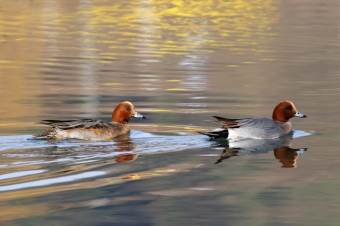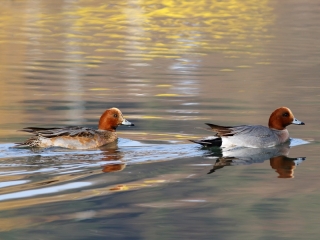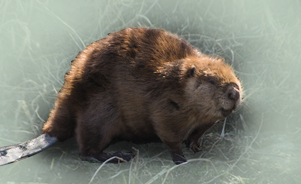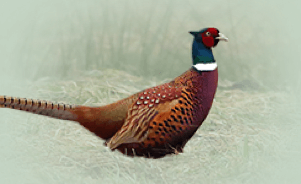Eurasian wigeon Anas penelope

Features
The Eurasian wigeon belongs to the genus of ducks, but because of its round head, it resembles diving ducks like the ferruginous duck (also ferruginous pochard, common white-eye or white-eyed pochard) or the common pochard. It measures from 45 to 51 cm in length, and has a wingspan of 75 to 86 cm.
| Species | Bird |
| Living space | Lake, Pond, Rivers, Streams, Swamp |
| Size | 45 - 51 cm |
| Weight | 720 g |
Description
The male is beautifully coloured and in the mating season it cannot be confused with any other species. The female has a protective brown colour. The male has a noticeably yellowish-coloured forehead and crown, while the rest of its head is chestnut brown. Its back and hips are grey, chest dirty pink and belly white. The Eurasian wigeon male is also characterised by a wide white belt on the wings and by some whiteness in front of its black tail. Its beak is bluish-grey with a black tip. The female is of less noticeable colours. Its hips, chest, neck and head are dark-brown. The head is adorned with tiny black spots that thicken around the eyes into the darker face. Its wings are grey, brown and black, and some dirty white appears on the tail. The female also has a bluish-black beak with a black tip, because of which it can be separated from other species in good light. The Eurasian wigeon gets its name from a melodious whistle produced by the males. When the males are surrounded by lakes or meadows in the far north, they produce a high, scratchy, whistling ‘whe-o’ to call females. Most Eurasian wigeons nest in Russia and Scandinavia, and part of the population can also be found in the UK and the US. They migrate from the nesting areas to warmer places in Asia, Africa and the Mediterranean before winter, which they spend on lowland lakes or floodplains and on muddy seashores. The Eurasian wigeon is a social herbivorous bird, which can often be found grazing in grasslands along lakes and rivers, in large flocks, much like geese. It nests in May and June mostly far in the north. In Slovenia, we can observe it during migration or in winter, as it is a regular winter guest here.
Features Temenica (3)
SPECIAL ogr.




